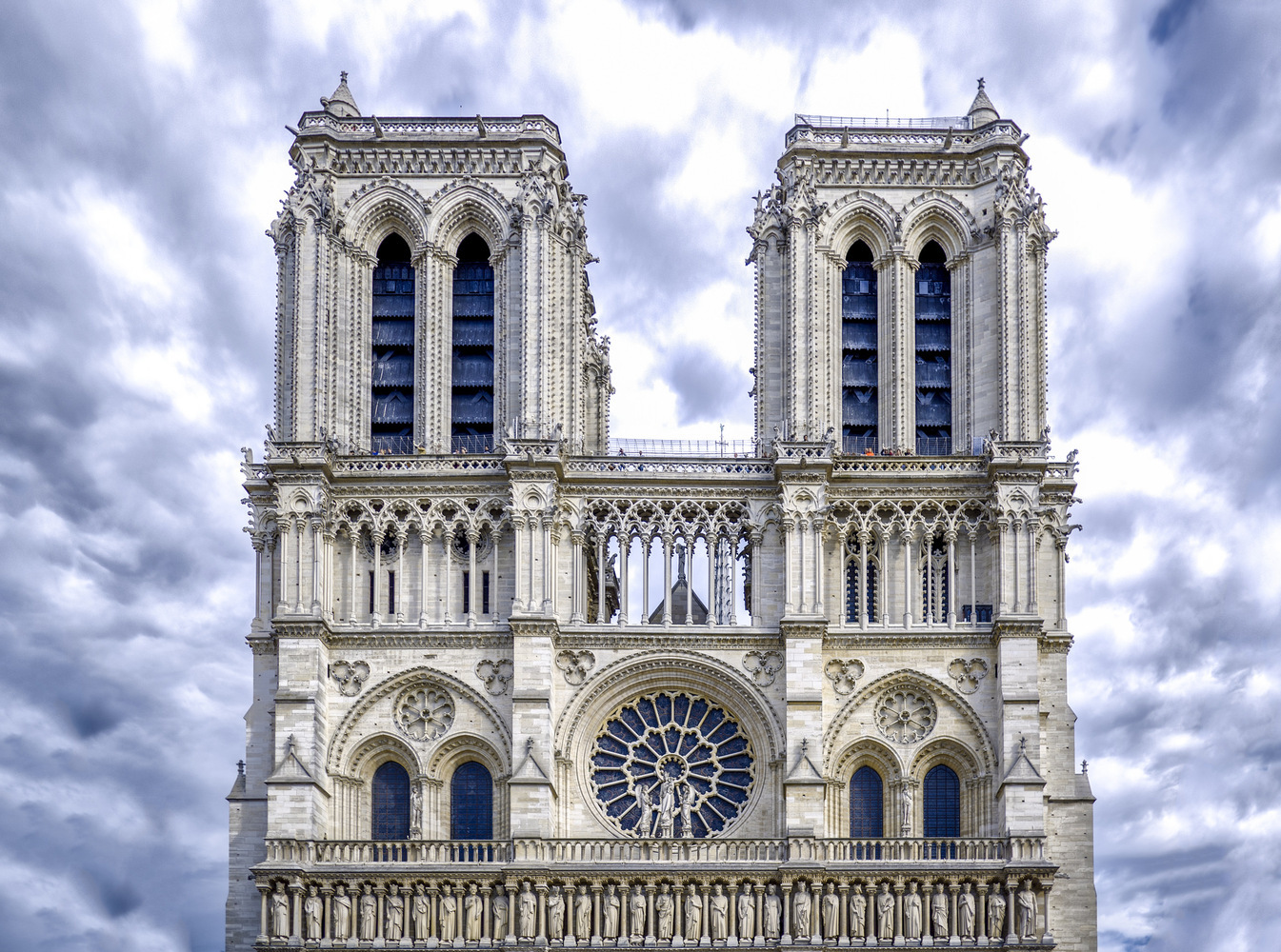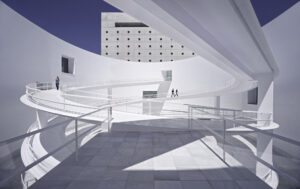The Romans built Cologne, Germany’s fourth-largest city, in 38 BC. The city is a major hub for technology, media, and culture since it is so diverse. The Cologne Cathedral, which is one of the most famous Gothic buildings in Europe, is also there. Architecture fans should definitely see it.
Many urban renovation projects have been finished in the city in the last few years. Rheinauhafen is one of the most important ones. It started in 2002 and was mostly done by 2011. This idea sped up the modernisation of Cologne while carefully protecting its architectural history. As part of this rejuvenation, big names like Microsoft, Electronic Arts (EA), and KAP am Südkai set up shop in the area. The city is now a lively mix of modern design and historic sites.
In this Cologne Travel Guide, we look at the city’s most famous buildings, from the Kranhäuser, which are modern architectural wonders, to the Cologne Cathedral, which is a historic masterpiece. It talks about the origins of the city’s name, Eau de Cologne, as well as some of its lesser-known architectural treasures. Cologne has something for everyone, whether you’re an architect looking for ideas or a tourist just wanting to enjoy the city’s particular charm. Get ready for the best architectural adventure of your life.
17 Important Cologne Landmarks: The Gothic Giant and Modern Marvels
Cologne Cathedral & Cathedral Square
The construction of Cologne Cathedral, a Catholic place of worship, began in 1248 and took 632 years to finish. In other terms, it is a tall building from the Middle Ages that is about 160 meters high. The builders of the mediaeval building had big plans for it. They wanted it to be home to the holy Shrine of the Three Kings and be a huge symbol of faith.
Many architects worked on its construction and restoration, although Master Gerhard and Ernst Friedrich Zwirner are the most well-known. You may see the most important parts of Gothic architecture up close when you visit the cathedral. These include soaring pointed ribbed vaults, ornate flying buttresses, and colourful stained glass windows. The 19th-century construction stayed true to the original Rayonnant Gothic ideas. The cathedral, which covers over 8000 m², is still the subject of architectural studies and is proudly classified as a UNESCO World Heritage Site.

Cologne’s Cathedral Source: fwtmagazine.com
Kranhäuser & Rheinauhafen District (Modern Architecture)
Architects: Hadi Teherani & Alfons Linster
The Kranhäuser were created between 2006 and 2010 as part of the restoration of Cologne’s old harbour district. These three crane-like towers are shaped like an upside-down “L,” which is similar to the shape of old harbour cranes that were used to load cargo aboard ships. By using the port’s industrial heritage as a starting point, the concept generates a stunning conversation between the past and the present.
Hadi Teherani and Alfons Linster came up with the Kranhäuser, which was a novel type of skyscraper that combined commercial, residential, and office buildings into a sculptural shape. They are now one of the most famous examples of modern architecture in Cologne. People who have additional time can walk through the Rheinauhafen District, which is a great example of an urban redevelopment project where old warehouses meet innovative modern design along the beautiful banks of the Rhine River.
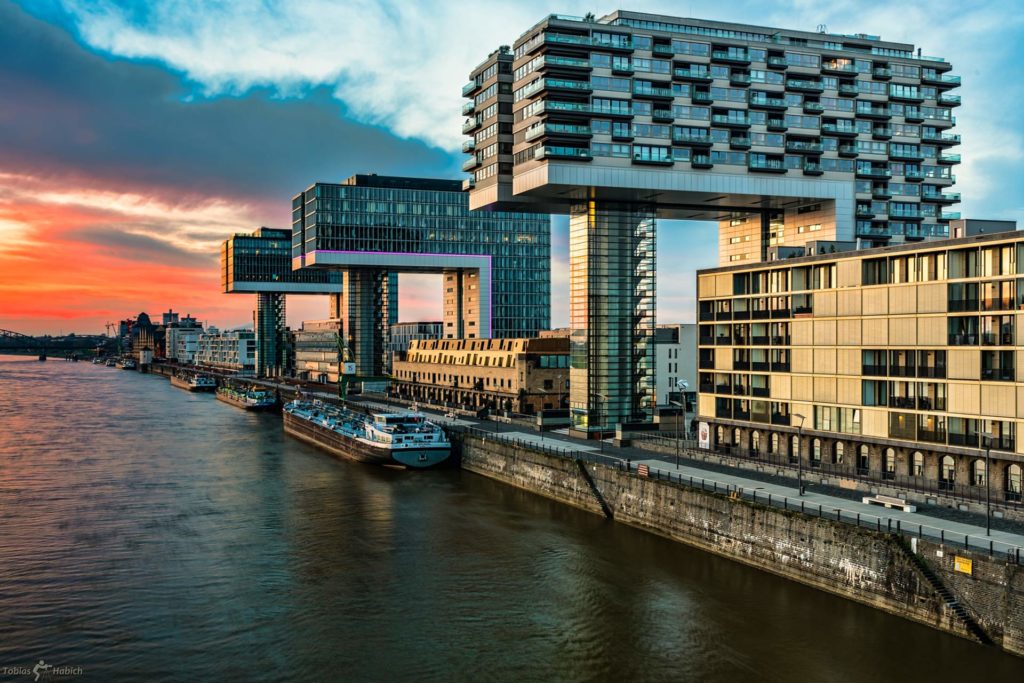
Kolumba Museum (a mix of modern minimalism and ruins)
Architect: Peter Zumthor
The Kolumba Museum is a strong illustration of how architecture and culture can stay the same over time. The project turns the remains of a church that was devastated during World War II into a modern exhibition space. The old church building is not only conserved, but it is also carefully integrated into a new space experience thanks to Zumthor’s respectful interpretation of history and the delicate use of grey brickwork. This makes sure that it stays a living part of Cologne’s urban memory. The brick facade with holes lets light into the room in a way that is very lyrical, providing a sense of calm that fits with the space’s meditative nature.

PETER ZUMTHOR: KOLUMBA MUSEUM, COLOGNE
Museum Ludwig (Postmodern Architecture)
Architects: Peter Busmann and Godfrid Haberer
The Museum Ludwig is near to the Cathedral and has one of the biggest collections of modern art in Europe, with important Pop Art and Picasso works. Its postmodern architecture, finished in 1986, is marked by its stepped, fortress-like shape that carefully fits the building into the busy cityscape between the Cathedral and the Rhine River.
Museum Ludwig, Cologne, Germany
Hohenzollern Bridge (Hohenzollernbrücke) (19th/20th Century Engineering)
The Hohenzollern Bridge is more than simply a piece of infrastructure; it’s a famous “love lock” in Cologne. This three-arched steel railway bridge was first built in the early 1900s, but it was rebuilt after being destroyed in World War II. Its famous view, which is framed by statues of horses and coated in hundreds of thousands of padlocks, is the greatest place to see the Gothic Cathedral and the Rhine panorama.

Hohenzollern Bridge (Hohenzollernbrücke)
KölnTriangle (Modern Skyscraper)
The 103-meter-tall KölnTriangle, which is in the Deutz district across the Rhine, has a public observation platform that gives you the best view. The modern Cologne skyline is known for its sleek, glass-covered buildings. From the top, you can see the Cathedral, which stands out in the historical cityscape.
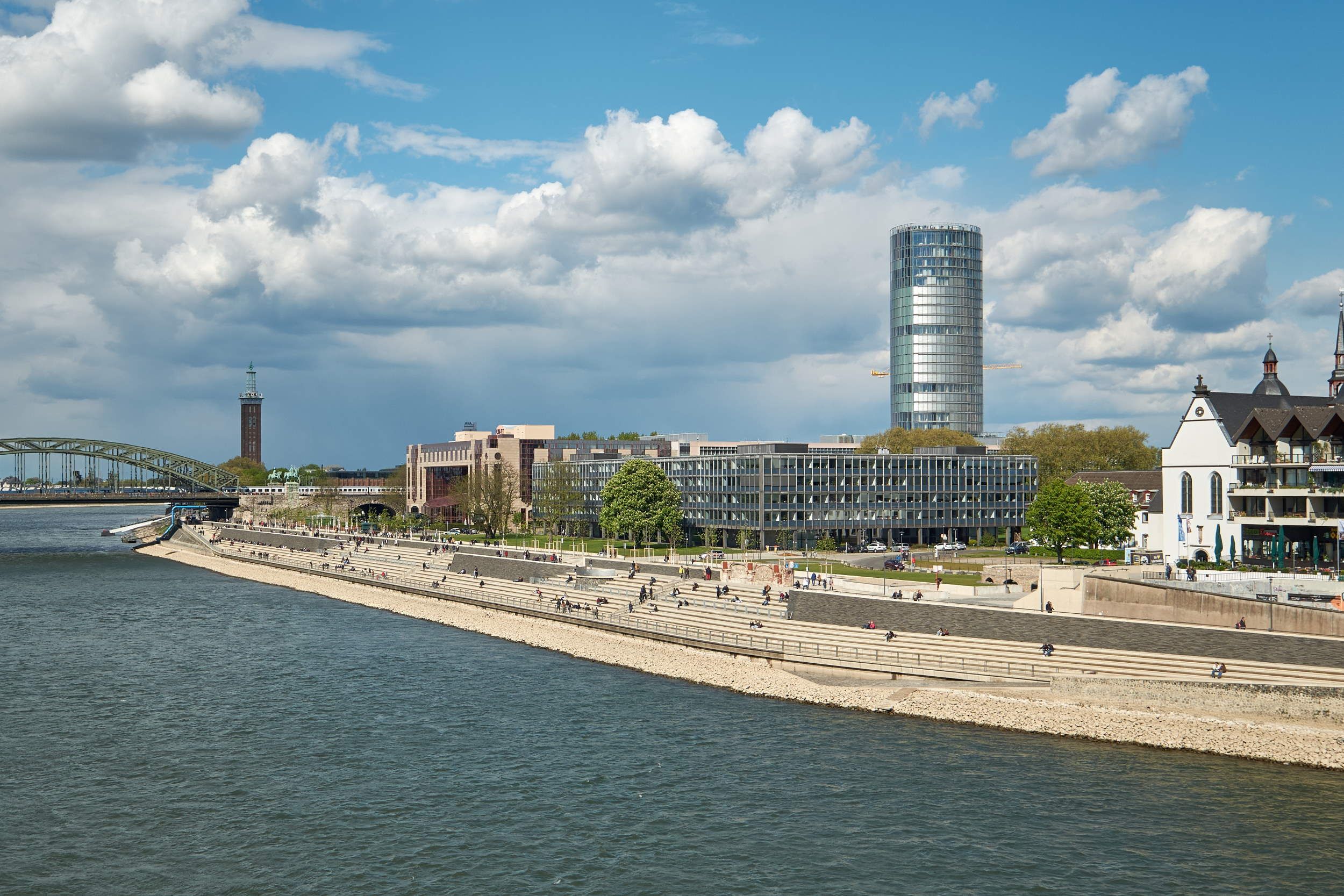
Weltstadthaus (Peek & Cloppenburg) (Modern Commercial Architecture)
Architect: Renzo Piano
The Weltstadthaus, which was designed by Pritzker Prize-winning architect Renzo Piano, is a stunning modern landmark on the busy Schildergasse shopping strip. Locally, it’s called the “Whale.” Its huge, shell-like wooden roof and wide, clear glass front provide for a stunning, light-filled space for the department store inside.
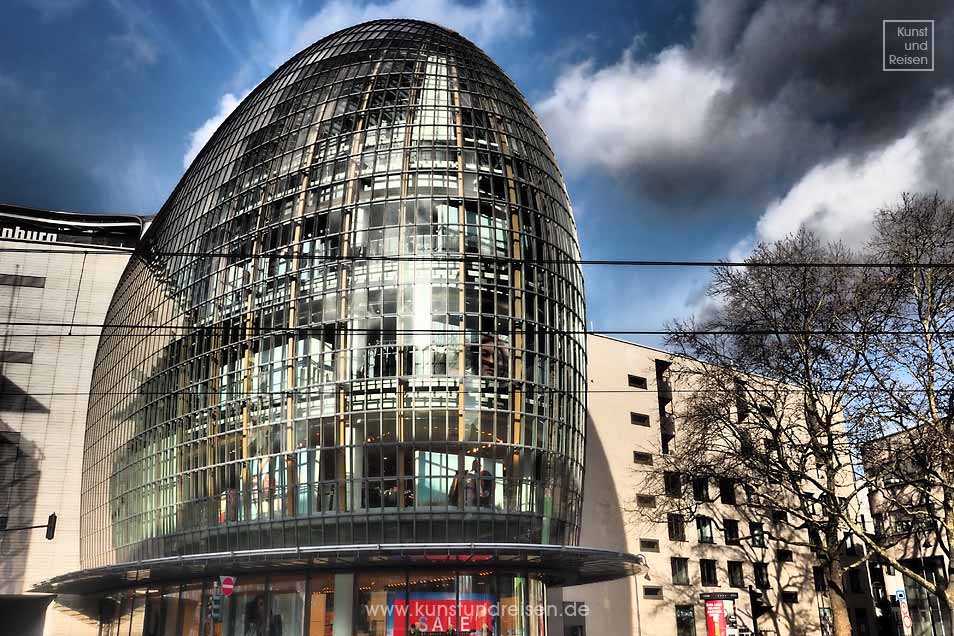 Weltstadthaus von Peek & Cloppenburg, Köln
Weltstadthaus von Peek & Cloppenburg, Köln
The Great St. Martin Church (Romanesque Architecture)
This beautiful Romanesque church, with its crossing tower and smaller towers on either side, is a distinctive element of the Altstadt skyline. After World War II, it was rebuilt. Its huge eastern apse sits elegantly above the ancient Fischmarkt square, showing how strong Cologne’s Romanesque tradition is.

Groß St. Martin / Great Saint Martin Church
The City Hall of Cologne (Historisches Rathaus)
Cologne’s City Hall is a remarkable mix of styles from over 900 years ago. It has a beautiful Gothic tower from the 15th century with 124 sculptures on it, a beautiful Renaissance loggia from the 16th century, and a modern atrium. The building provides a lesson in physical history in the Old Town.
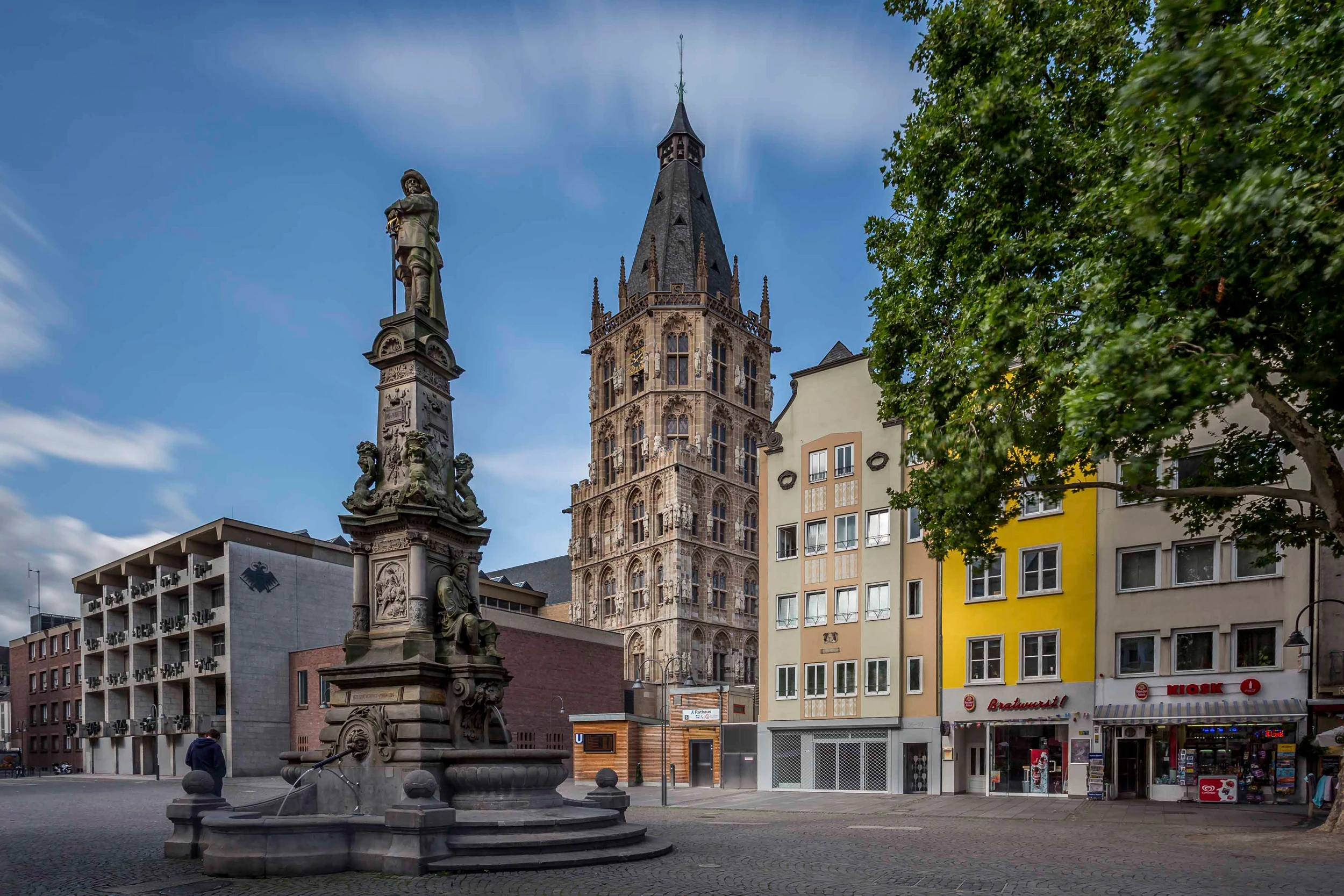
The Central Mosque Cologne (DITIB) (Modern Islamic Architecture)
Architect: Paul Böhm
This beautiful building, which was finished in 2017, is one of the largest mosques in Germany. It mixes current Islamic design with modern aesthetics. The building has a beautiful shell-shaped dome and two tall minarets. It was designed with the philosophy of openness and transparency to encourage people to talk to each other.
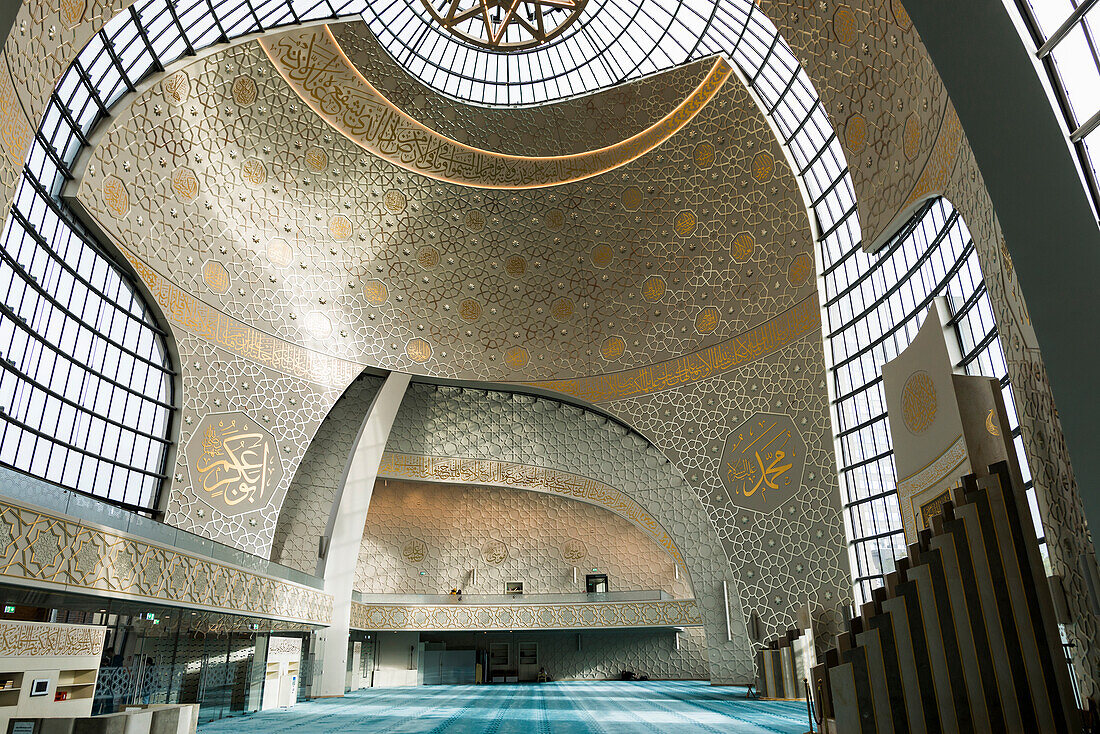
DITIB Central Mosque Cologne, architects Gottfried and Paul Böhm, Cologne, Rhineland, North Rhine-Westphalia, Germany © lookphotos / Daniel Schoenen Fotografie
St. Gereon’s Basilica (Romanesque and Late Roman Architecture)
St. Gereon’s remarkable ten-sided dome, which came from a late-Roman burial chapel, is an example of mediaeval architecture at its best. One of the best things about the twelve major Romanesque cathedrals in Cologne is its huge, tall building, which shows off amazing engineering for its period.
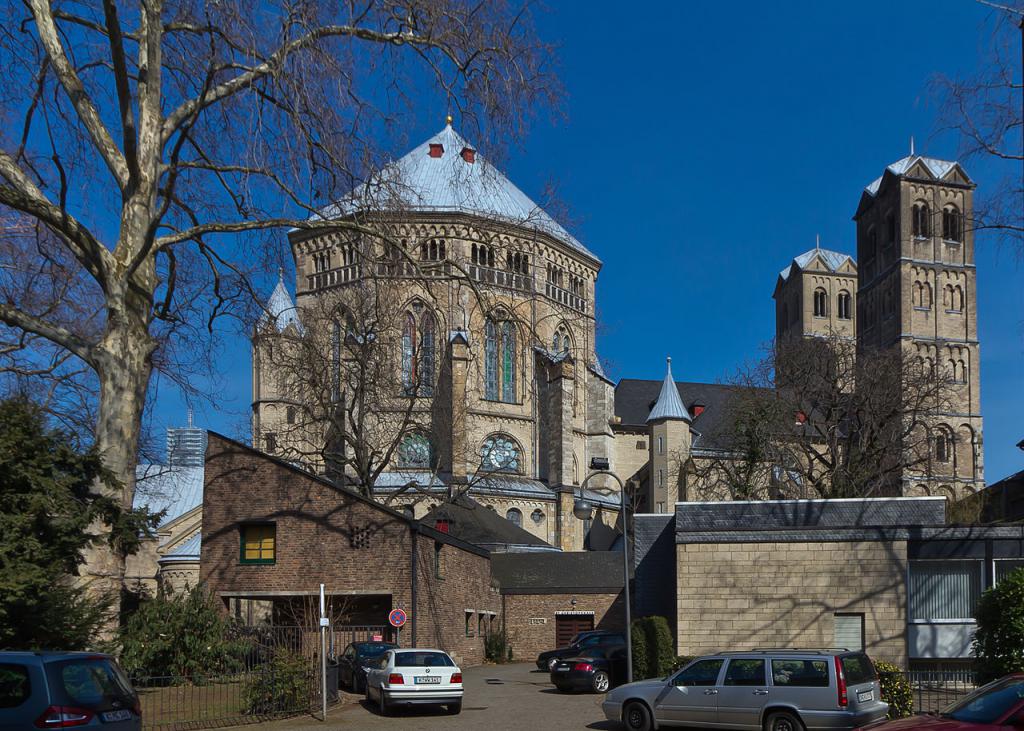
St. Gereon’s Basilica
St. Maria im Kapitol (Romanesque Architecture)
This big Romanesque church was built on the site of an ancient Roman temple and was consecrated in 1065. It is notable for its unique clover-leaf choir arrangement, which is also present in the Great St. Martin Church. It is a great example of early mediaeval architecture because of its size and historical importance.
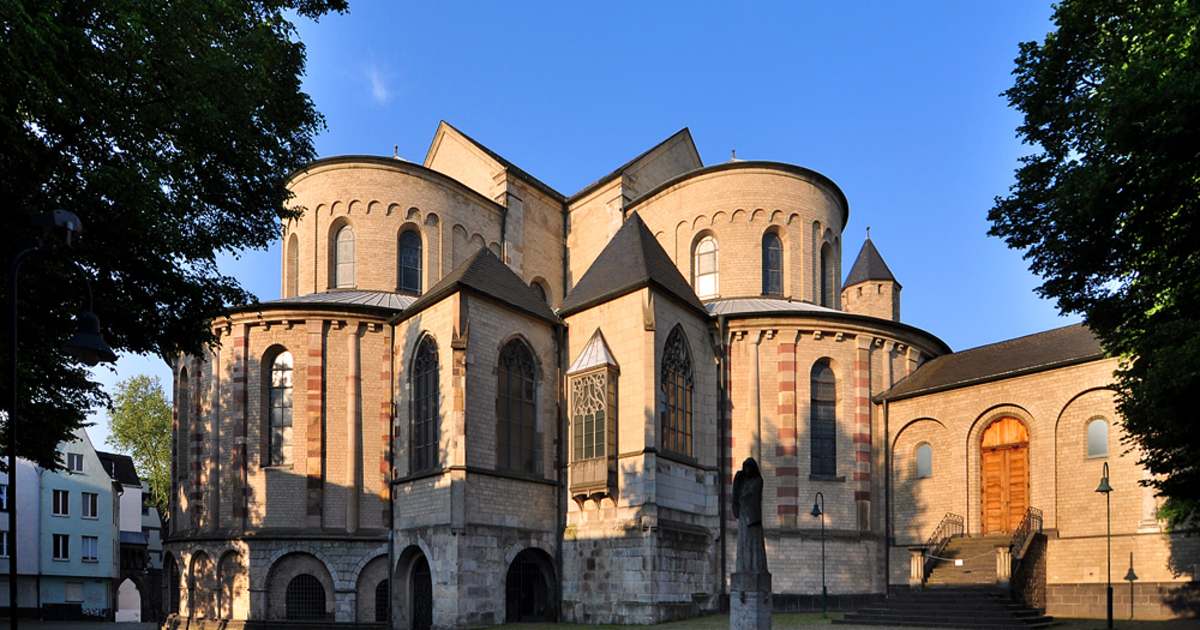
St. Maria im Kapitol
Neue Direktion Köln (Adaptive Reuse/Historic Preservation)
This building, formerly the Royal Railway Directorate, suffered damage during WWII but was transformed into a modern office complex. The project kept the neoclassical outside and added modern, flexible rooms within. This shows Cologne’s commitment to preserve history through adaptive reuse.

NDK – New Directorate Cologne Cologne, 2012 – 2016
Cologne Oval Offices (Modern/Sustainable Architecture)
Architect: Sauerbruch Hutton
The Oval Offices are easy to spot in the southern section of the city because of their colourful, eco-friendly design. The building has a unique, curving, multi-colored exterior that focusses on energy efficiency and a fun, colourful approach to corporate architecture.

Germany Cologne Oval Offices
The Twelve Romanesque Churches
(Architectural Heritage)
While the Cathedral is the star, Cologne is famous for its Twelve Romanesque Churches, including St. Gereon and Great St. Martin. Seeing these churches—like St. Kunibert’s, St. Aposteln, and St. Ursula—offers a comprehensive view of the city’s early medieval architectural prowess.
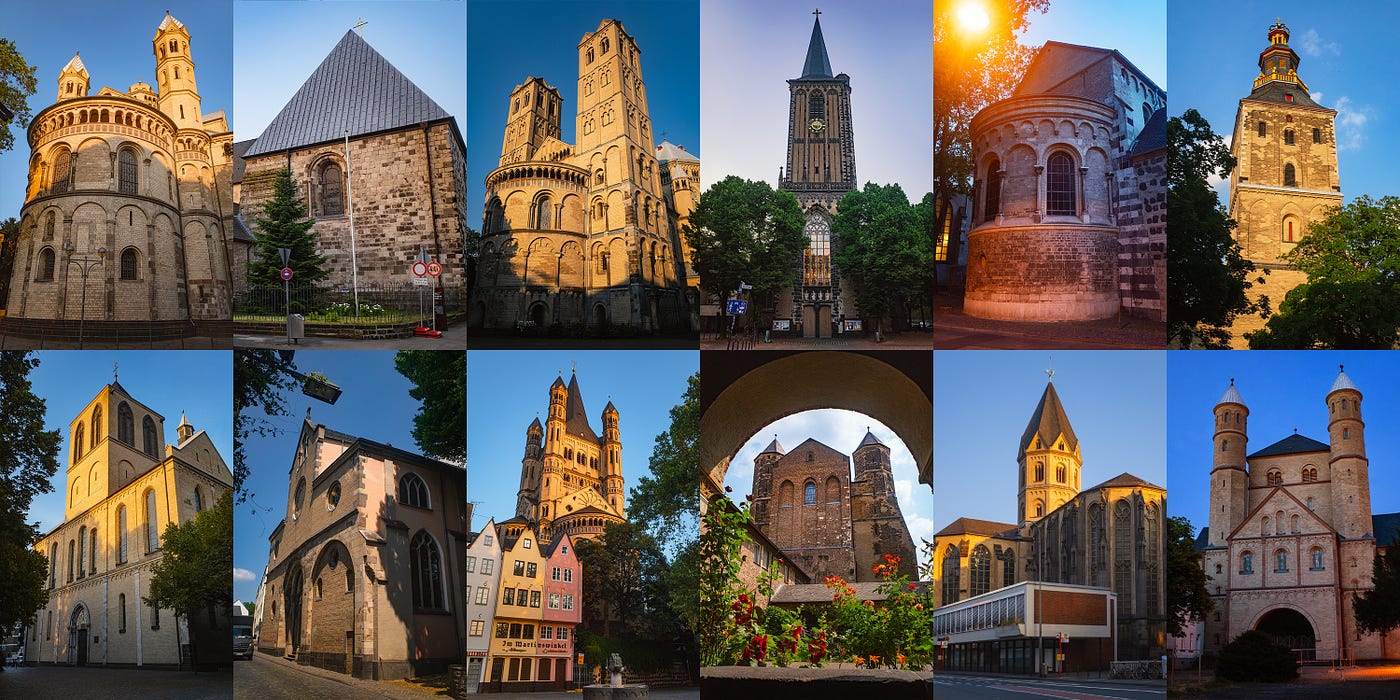
Famous Romanesque Churches
Fischmarkt & Colorful Houses
(Historic Vernacular)
Though not a single structure, the row of narrow, colorful houses lining the Fischmarkt square, with the imposing Great St. Martin Church as a backdrop, is one of Cologne’s most photographed and cherished scenic compositions. This area captures the charm and spirit of the historic Old Town.

Colorful old houses and church tower at the fish market square in Koln, Germany
Cologne Bonn Airport (CGN)
(20th-Century Modernism)
Architect: Murphy/Jahn
The main terminal building, designed by Helmut Jahn, is a significant piece of modern architecture, characterized by its open, light-filled spaces and exposed steel structure. It provides a striking first or last impression of Cologne’s commitment to high-quality design and engineering.

Germany Current:Cologne-Bonn (CGN)
Your Ultimate Journey
Cologne is a city of layers, where the weight of medieval stone meets the lightness of contemporary glass. From the enduring spiritual monument of the Kölner Dom to the bold, innovative forms of the Kranhäuser, this is a city that respects its Roman and Gothic foundations while enthusiastically building its future. To fully appreciate Cologne is to understand this dialogue between the spectacular past and the ultimate modernity. Take your time, look up, and let the architecture tell its thousand-year-old story.
For more content like this CLICK HERE!!
Reference:
15 Best examples of Gothic architecture around the world – RTF | Rethinking The Future

